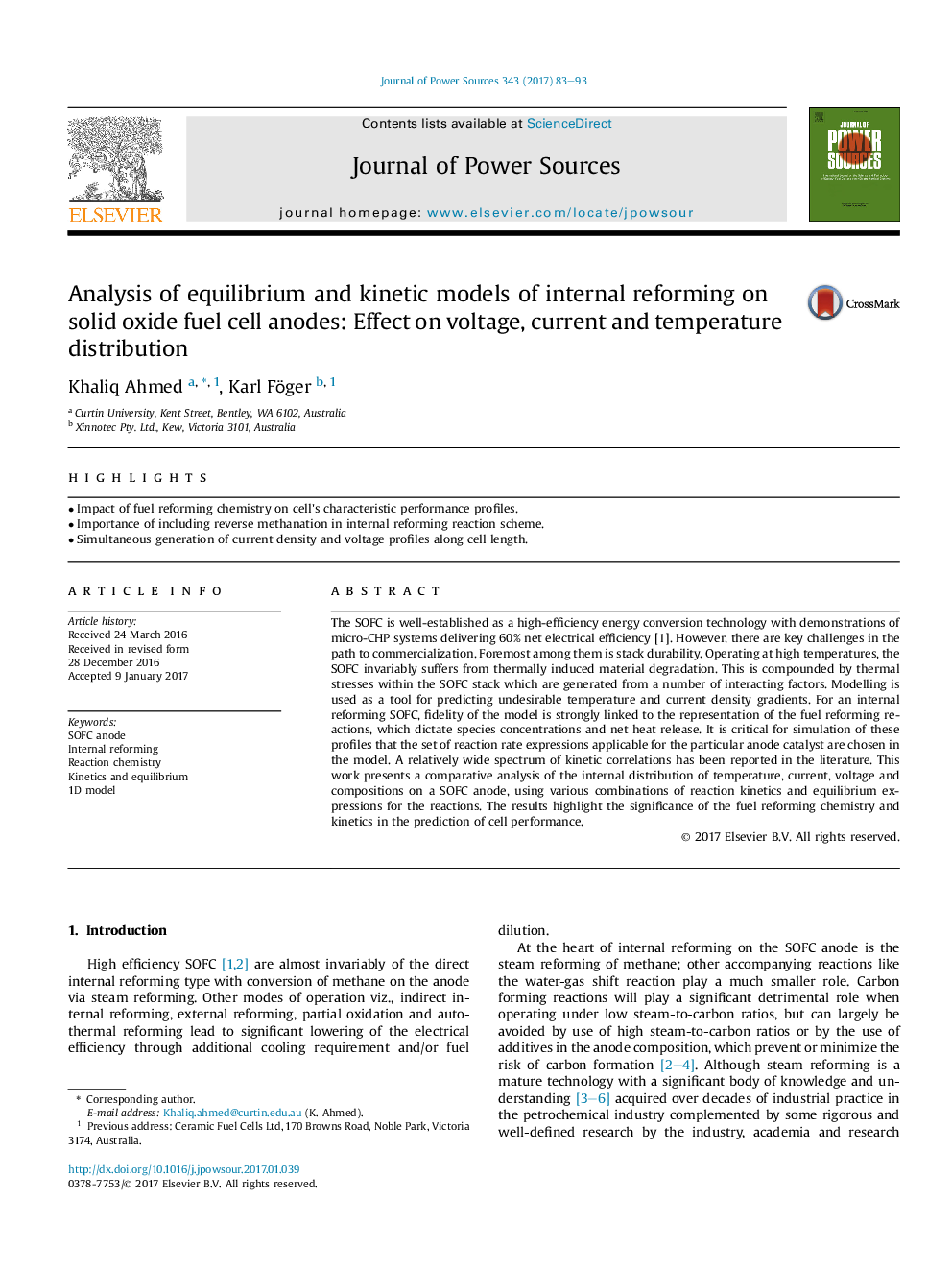| Article ID | Journal | Published Year | Pages | File Type |
|---|---|---|---|---|
| 5149458 | Journal of Power Sources | 2017 | 11 Pages |
Abstract
The SOFC is well-established as a high-efficiency energy conversion technology with demonstrations of micro-CHP systems delivering 60% net electrical efficiency [1]. However, there are key challenges in the path to commercialization. Foremost among them is stack durability. Operating at high temperatures, the SOFC invariably suffers from thermally induced material degradation. This is compounded by thermal stresses within the SOFC stack which are generated from a number of interacting factors. Modelling is used as a tool for predicting undesirable temperature and current density gradients. For an internal reforming SOFC, fidelity of the model is strongly linked to the representation of the fuel reforming reactions, which dictate species concentrations and net heat release. It is critical for simulation of these profiles that the set of reaction rate expressions applicable for the particular anode catalyst are chosen in the model. A relatively wide spectrum of kinetic correlations has been reported in the literature. This work presents a comparative analysis of the internal distribution of temperature, current, voltage and compositions on a SOFC anode, using various combinations of reaction kinetics and equilibrium expressions for the reactions. The results highlight the significance of the fuel reforming chemistry and kinetics in the prediction of cell performance.
Keywords
Related Topics
Physical Sciences and Engineering
Chemistry
Electrochemistry
Authors
Khaliq Ahmed, Karl FÓ§ger,
